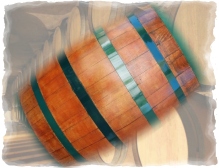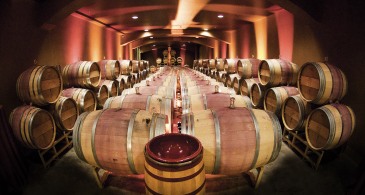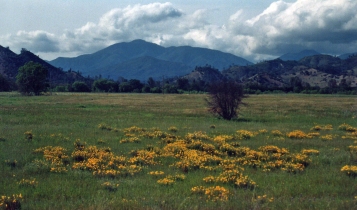Little more than a handful of years ago, if you would have asked me what topping off is, I’d simply say it’s adding a little extra fuel in tank. Well, that’s not far off when considering topping off a wine barrel.

We may have talked about the fact in the past, but basically an oak wine barrel is somewhat porous, allowing wine to breath. However, that loss or evaporation creates a void in the wine barrel called headspace or ullage as the French call it, which lies between the top of the wine and the top of the barrel where the bung hole is. Note, when not empty, a wine barrel lays long way on a wine rack with the bung sitting on top and a bung-stopper plugged in.
Evaporation & racking
The evaporated wine is called the ‘angel’s share’ and is common in winemaking. You don’t want that gap as it could cause oxygenation, which isn’t good for wine. So wine is added to top off the barrel. The wine used can be literally anything the winemaker chooses, but usually is a similar type of wine or varietal that might compliment the barreled wine. For instance. If you had Zinfandel in the barrel, because Zin can sometimes lack depth or structure, a Petite Syrah is added when topping off.
Topping off might occur a little more often at the beginning when the wine it still fermenting, but after primary fermentation, a wine is at rest and just waiting for it to age, so topping off might occur less often.
Also, wine has to be racked ever so often to get the wine off the sediment, which is commonly called lees. Racking is moving the wine from the vessel to another barrel temporarily so the barrel can be cleaned. I’ll probably talk about racking at another time, but in short, this cleans up the wine a bit so the wine can gain quality. This process obviously removes volume from the wine barrel, and in-turn a large headspace is present and needs topped off.
The original varietal will keep its character and the loss and topping off isn’t sufficient enough to truly affect the wine. It might be added here that this time of topping off is often a good time for the winemaker to check on and even taste the wine. Sometimes a winery will make this an opportunity of wine evaporation to have a barrel-tasting with friends, family or customers.
Controlling angel’s share
Over the course of say two years in the barrel, a wine might lose four to six gallons. Some wineries will try to use temperature and humidification system to limit this process of lost wine to angel’s share. These more controlled environments will allow the wine to lose less alcohol and more water, which consequently will bring the alcohol percentage up. This allows for less meddling with the wine, which some winemakers prefer.
You may have noticed some wineries use caves to store their barrels of wine, and this method controls the aging process and keeps the evaporation down. Regardless, the process of checking the wine, checking the headspace and topping it off occurs anywhere from every week or two, to sometimes quarterly. This is based on the winemaker along with the storage conditions.

Barrel tasting has to be part of the ‘work’ in winemaking.
All of this action around the wine barrel is why the area around the bung is red, compared the to the rest of the barrel. That’s fine and even gives a barrel character for us used barrel folks.
So the next time you have a chance to visit a winery and barrel-taste, do so and maybe you’ll even catch them topping off the wine. Any excuse, right?
Sources: Venture Vineyards, Wine Making: The Ultimate Guide to Making Wine at Home
Cheers,
Daryle W. Hier
.





















 burgeoning wine region in southeastern Washington state. However, with growth and new plantings comes the need for water. In a region that is stark in comparison with the rest of the state – whose nickname is the Evergreen State – this semi-arid area needed more water for irrigation. That has been accomplished with the Kennewick Irrigation District
burgeoning wine region in southeastern Washington state. However, with growth and new plantings comes the need for water. In a region that is stark in comparison with the rest of the state – whose nickname is the Evergreen State – this semi-arid area needed more water for irrigation. That has been accomplished with the Kennewick Irrigation District 




